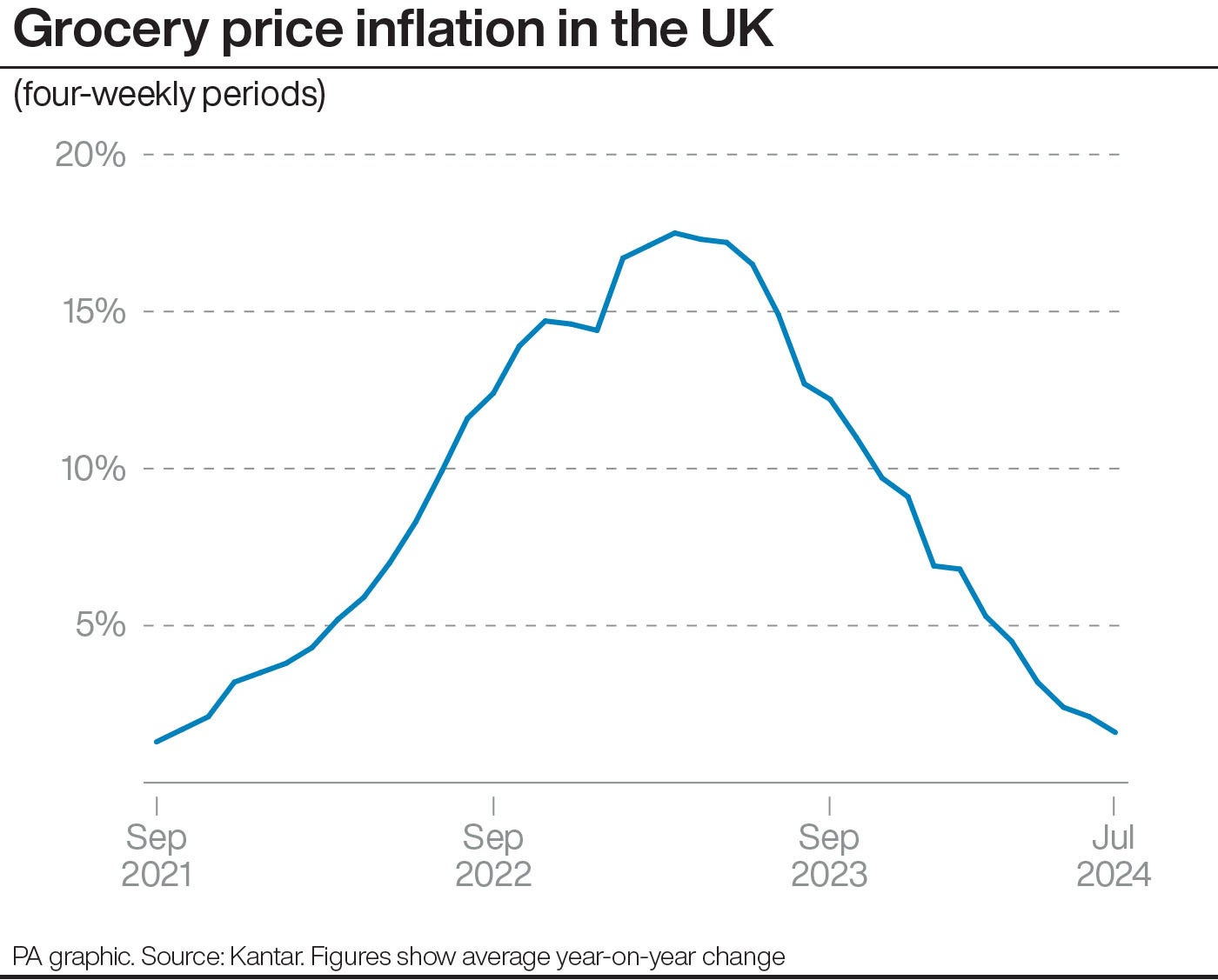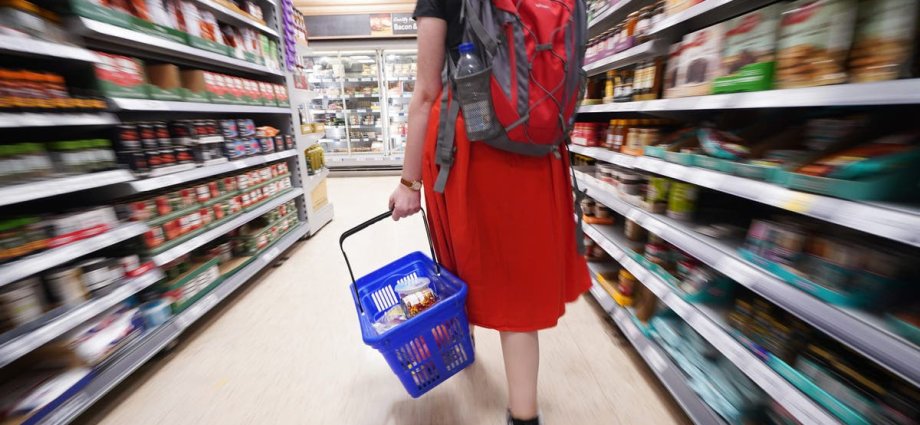Falling inflation, football and fake tan dominated grocery shopping this month as rising consumer confidence and Euros excitement was dampened by the relentlessly wet summer, figures show.
Grocery price inflation continued its fall to 1.6%, down from June’s 2.1% and its lowest figure since September 2021, according to analysts Kantar.
The drop coincided with the fastest rise in monthly footfall so far this year, with Britons making 2% more trips to the supermarket this period than they did one year ago.

As household financial pressures eased, sales of branded products increased by 3.6%, outpacing own-label items at 2.7%.
England’s progression through the Euros tournament saw football fans driving beer sales up by an average of 13% on the days that the team played compared with the same day in the previous week.
However, with many matches played on “school nights”, Britons apparently chose moderation, sending spending on no and low-alcohol beer up by 38% on matchdays.
Meanwhile, the soggy summer has seen sales of cold and flu treatments jump by 35%, while sun cream sales were down by 10% and sales of artificial tan rose by 16% compared with last year, when the UK enjoyed the warmest June on record.
Ahead of the King’s Speech on Wednesday, Fraser McKevitt, head of retail and consumer insight at Kantar, said: “The retail landscape looks very different from 2010 when the last Labour government was in power – and so do our shopping trolleys.
“As diets have evolved, sales of popcorn, peanut butter and chilled vegetarian products, such as sausages and grills, have more than trebled.
“We’re also more likely to have premium ground and bean coffee in our cups now.”
Ocado was the fastest-growing grocer for the fifth month in a row, with sales up by 10.7% over the 12 weeks to July 7.
Waitrose gained market share for the first time since January 2022, achieving a 0.1 percentage point rise to 4.5% as spending at the upmarket grocer increased by 3.3%.
Britain’s largest grocer Tesco achieved its biggest share gain since November 2021, taking 27.7% of the market – a 0.7 percentage point increase compared with last year.











